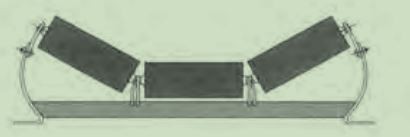 Afrikaans
Afrikaans  Albanian
Albanian  Amharic
Amharic  Arabic
Arabic  Armenian
Armenian  Azerbaijani
Azerbaijani  Basque
Basque  Belarusian
Belarusian  Bengali
Bengali  Bosnian
Bosnian  Bulgarian
Bulgarian  Catalan
Catalan  Cebuano
Cebuano  Corsican
Corsican  Croatian
Croatian  Czech
Czech  Danish
Danish  Dutch
Dutch  English
English  Esperanto
Esperanto  Estonian
Estonian  Finnish
Finnish  French
French  Frisian
Frisian  Galician
Galician  Georgian
Georgian  German
German  Greek
Greek  Gujarati
Gujarati  Haitian Creole
Haitian Creole  hausa
hausa  hawaiian
hawaiian  Hebrew
Hebrew  Hindi
Hindi  Miao
Miao  Hungarian
Hungarian  Icelandic
Icelandic  igbo
igbo  Indonesian
Indonesian  irish
irish  Italian
Italian  Japanese
Japanese  Javanese
Javanese  Kannada
Kannada  kazakh
kazakh  Khmer
Khmer  Rwandese
Rwandese  Korean
Korean  Kurdish
Kurdish  Kyrgyz
Kyrgyz  Lao
Lao  Latin
Latin  Latvian
Latvian  Lithuanian
Lithuanian  Luxembourgish
Luxembourgish  Macedonian
Macedonian  Malgashi
Malgashi  Malay
Malay  Malayalam
Malayalam  Maltese
Maltese  Maori
Maori  Marathi
Marathi  Mongolian
Mongolian  Myanmar
Myanmar  Nepali
Nepali  Norwegian
Norwegian  Norwegian
Norwegian  Occitan
Occitan  Pashto
Pashto  Persian
Persian  Polish
Polish  Portuguese
Portuguese  Punjabi
Punjabi  Romanian
Romanian  Russian
Russian  Samoan
Samoan  Scottish Gaelic
Scottish Gaelic  Serbian
Serbian  Sesotho
Sesotho  Shona
Shona  Sindhi
Sindhi  Sinhala
Sinhala  Slovak
Slovak  Slovenian
Slovenian  Somali
Somali  Spanish
Spanish  Sundanese
Sundanese  Swahili
Swahili  Swedish
Swedish  Tagalog
Tagalog  Tajik
Tajik  Tamil
Tamil  Tatar
Tatar  Telugu
Telugu  Thai
Thai  Turkish
Turkish  Turkmen
Turkmen  Ukrainian
Ukrainian  Urdu
Urdu  Uighur
Uighur  Uzbek
Uzbek  Vietnamese
Vietnamese  Welsh
Welsh  Bantu
Bantu  Yiddish
Yiddish  Yoruba
Yoruba  Zulu
Zulu types of take up pulley
Types of Take-Up Pulleys
Take-up pulleys play a crucial role in various mechanical systems, particularly in conveyor belt applications. By providing tension and allowing for the adjustment of belts, take-up pulleys ensure smooth operation and extend the life of the belt drive. Understanding the different types of take-up pulleys is essential for selecting the right one for a specific application. This article explores the various types of take-up pulleys, their features, and applications.
1. Fixed Take-Up Pulleys
Fixed take-up pulleys are the simplest form of take-up mechanism. They are mounted firmly and do not allow for any adjustment in tension. This type is typically found in systems where the belt length is predetermined and does not require frequent adjustments. Fixed take-up pulleys are often made of durable materials to withstand the operational stresses they encounter.
*Applications* These are commonly used in installations where the operating conditions are stable, such as in assembly lines or other manufacturing processes where the belts maintain a consistent length.
2. Adjustable Take-Up Pulleys
Adjustable take-up pulleys allow for modifications in belt tension through an adjustable mechanism that can accommodate changes in length or sag due to wear and tear. This type is often mounted on a bracket, which can be moved to adjust the tension. Some systems may incorporate a screw mechanism that allows for precise adjustments.
*Features* The ability to adjust tension helps in maintaining optimal performance, reducing the risk of belt slippage, and prolonging belt life.
*Applications* Adjustable take-up pulleys are widely used in industries where changes in load and length are frequent, such as mining, agricultural applications, and material handling.
Automatic take-up pulleys are designed to maintain constant tension in the belt without manual intervention. These systems use a spring-loaded mechanism or a hydraulic system that automatically adjusts the tension as the belt wears or stretches. This type of take-up pulley helps to minimize downtime by reducing the need for regular maintenance and adjustments.
types of take up pulley

*Features* Automatic take-up pulleys contribute to enhanced efficiency and reliability in operations, as they automatically compensate for any variations.
*Applications* They are particularly beneficial in continuous operation applications, such as power plants, where consistent performance is crucial.
4. Gravity Take-Up Pulleys
Gravity take-up pulleys rely on a weight assembly to create tension in the belt. The pulley is mounted on a frame with a weight that can move vertically, allowing the take-up to adjust as the belt stretches. This type of system is effective in applications where fluctuations in tension occur due to varying loads.
*Features* Gravity take-up solutions are often simpler and cheaper than other automatic systems but require more space due to the need for weight movement.
*Applications* Often found in bulk handling industries, such as quarries and mining, where conveyor belts are subjected to heavy loads.
5. Snub Pulleys
Snub pulleys are not traditional take-up pulleys but are often used in conjunction with them. They help increase the arc of contact between the belt and the driving pulley, enhancing grip and tension. While they don't directly adjust tension, they assist in ensuring that the system operates effectively.
*Applications* Snub pulleys are used in various settings where improved belt stability is necessary, such as in steep incline conveyors or where changes in direction occur.
Conclusion
The choice of the appropriate take-up pulley is vital in ensuring the efficiency, safety, and longevity of any belt-driven system. Factors such as the application, load conditions, and required adjustments dictate the type of take-up pulley that should be used. Fixed, adjustable, automatic, gravity, and snub pulleys all serve unique purposes in enhancing the performance of conveyor systems. Understanding these differences enables engineers and operators to make informed decisions, leading to improved operational efficiency and reduced maintenance costs in the long run. Proper selection and maintenance of take-up pulleys not only optimize the machinery’s performance but also contribute to a safer working environment in various industrial applications.
-
Taper Centering Idler Set for Conveyor SystemsNewsJun.25,2025
-
Small Idler Rollers for Industrial ConveyorsNewsJun.25,2025
-
Guide Training Idler Set for Conveyor MaintenanceNewsJun.25,2025
-
Friction Offset Idler Set for Industrial UseNewsJun.25,2025
-
Double-Center-Roller Idler AlignmentNewsJun.25,2025
-
Channel Inset Impact Troughing Idler Set for Heavy LoadsNewsJun.25,2025





























